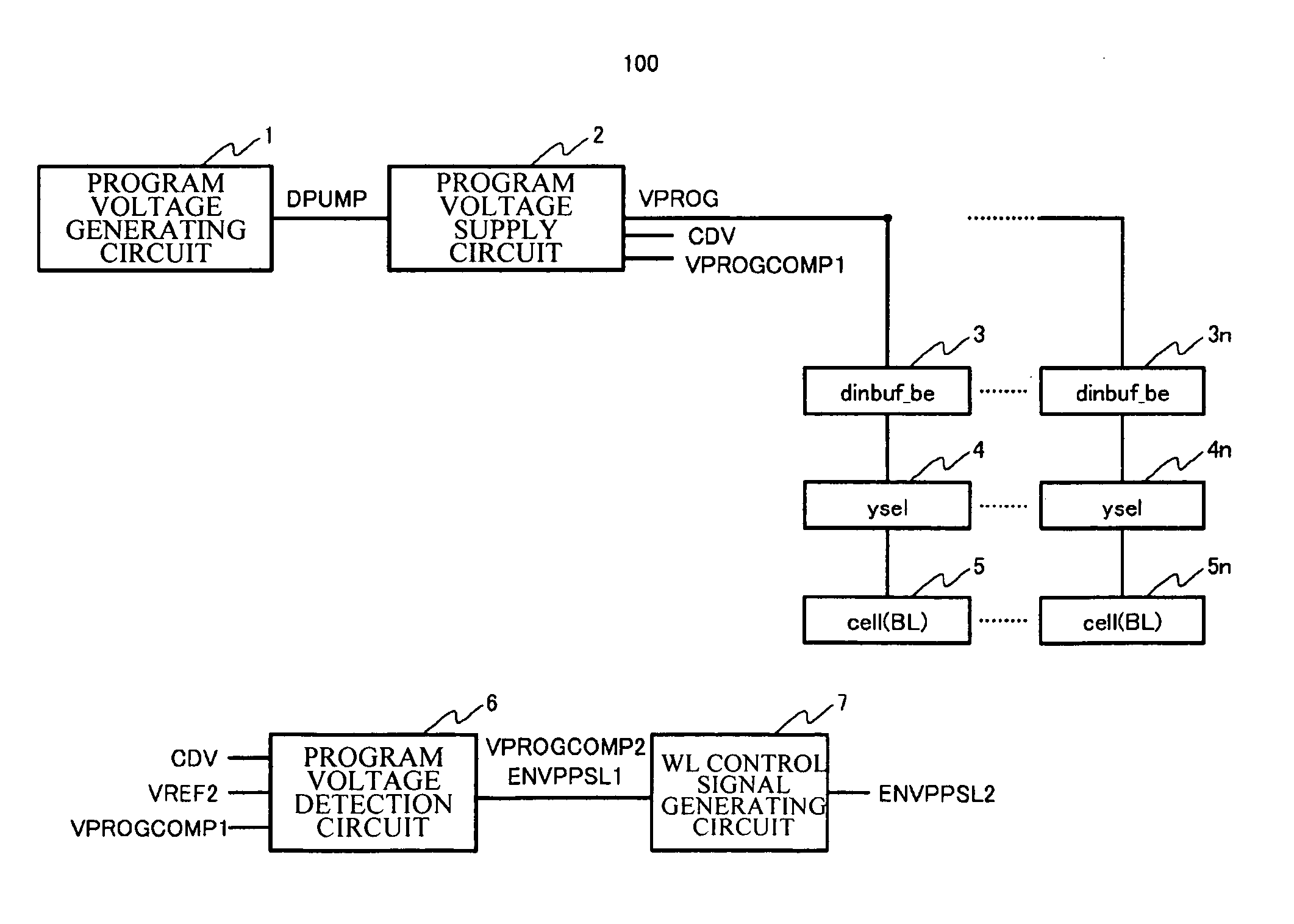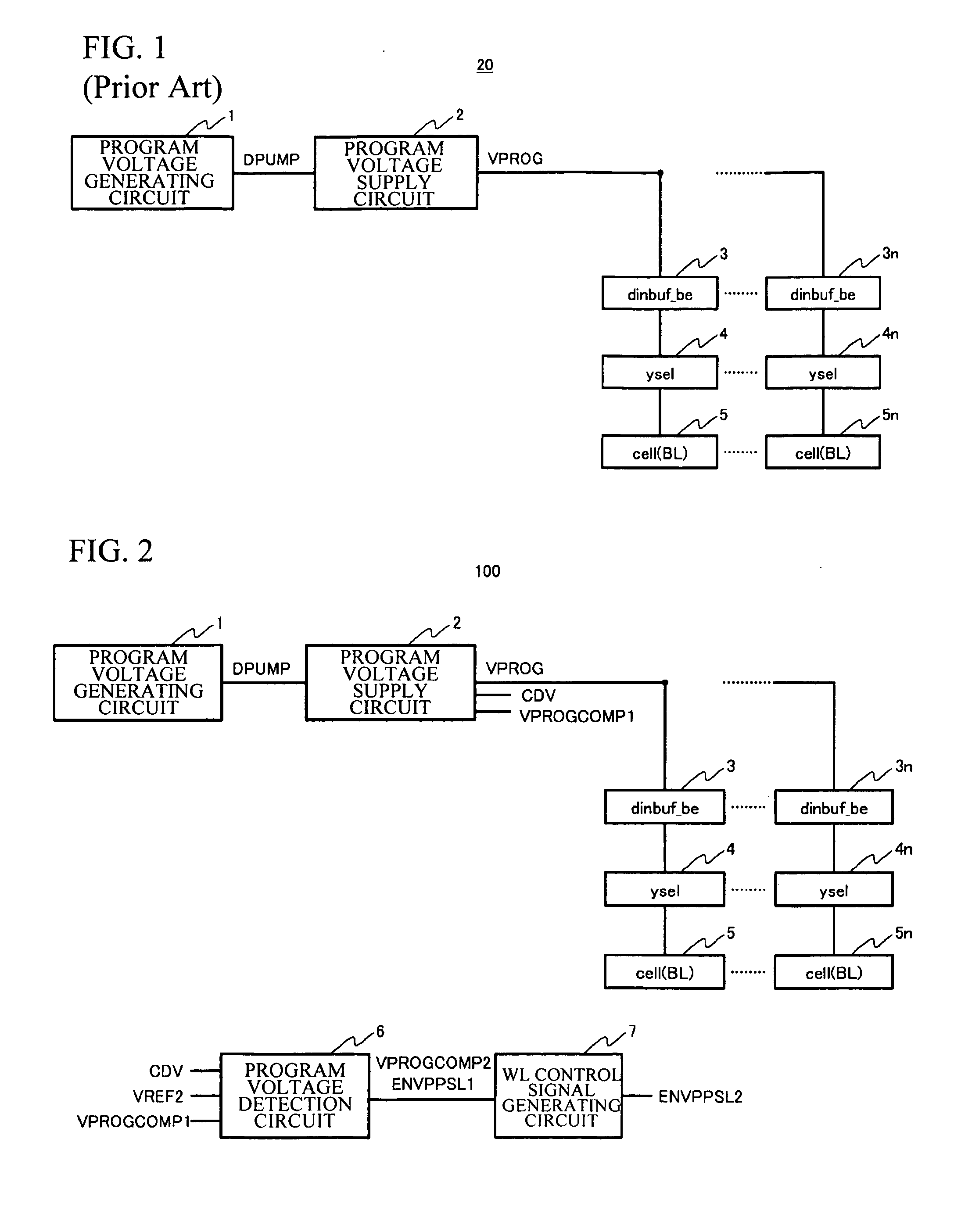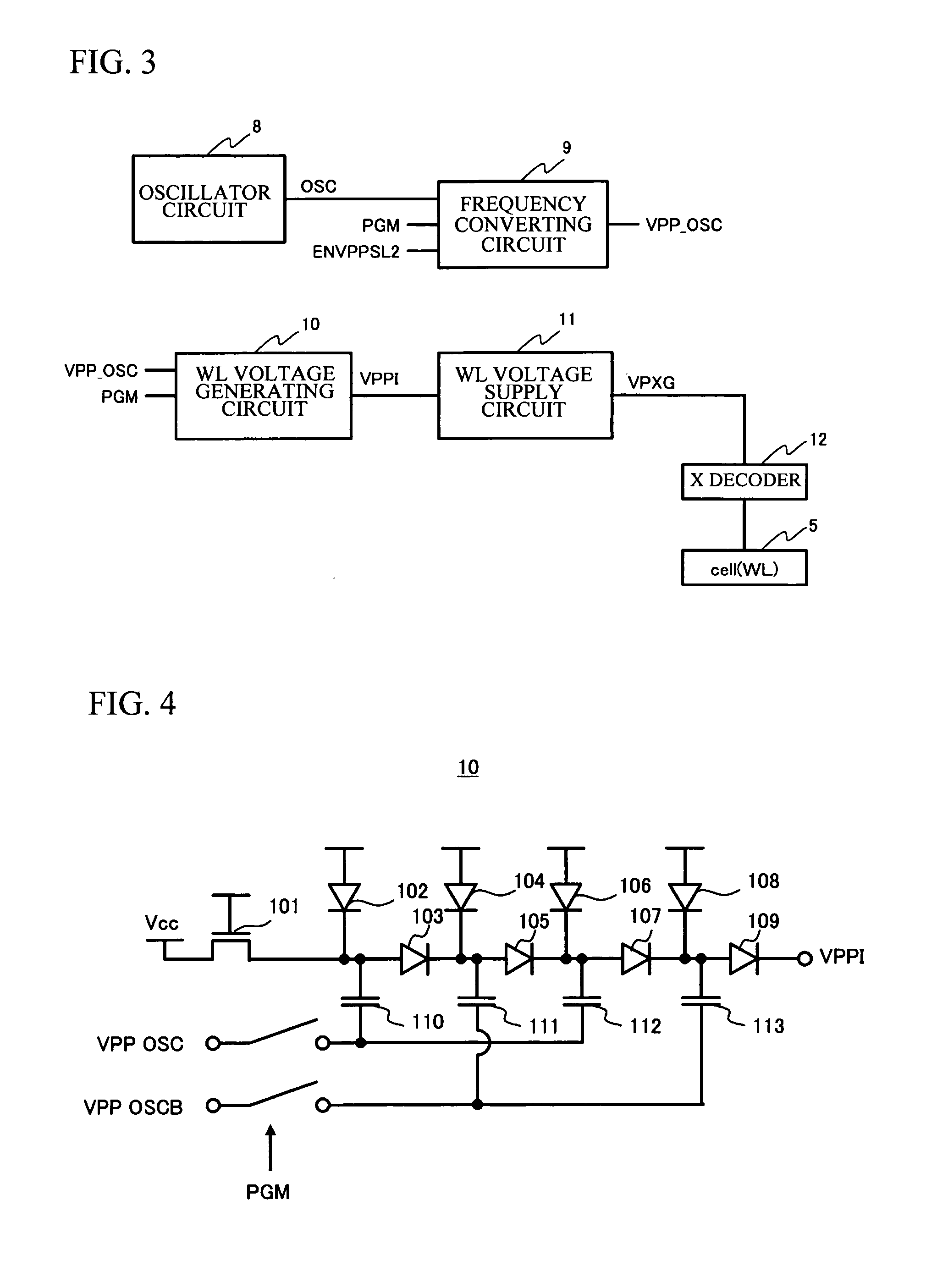Semiconductor device and control method thereof
a technology of semiconductor devices and circuits, applied in the field of semiconductor devices, can solve the problems of reducing the output voltage of the drain pump, and unable to program multiple bits at the same time, so as to achieve the effect of not having to increase the number of the program voltage generation circuits and not enlarging the circuitry scal
- Summary
- Abstract
- Description
- Claims
- Application Information
AI Technical Summary
Benefits of technology
Problems solved by technology
Method used
Image
Examples
first embodiment
[0036]FIG. 2 is a view partially showing a circuit configuration of the non-volatile semiconductor memory device in accordance with the first embodiment of the present invention. As shown in FIG. 2 and FIG. 3, the non-volatile semiconductor memory device 10 includes a program voltage generating circuit 1, a program voltage supply circuit 2, a data in buffer circuit 3, a Y decoder (ysel) 4, a memory cell 5, a program voltage detection circuit 6, a WL voltage control signal generating circuit 7, an oscillator circuit 8, a frequency converting circuit 9, a WL voltage generating circuit 10, a WL voltage supply circuit 11, and an X decoder 12.
[0037]In the memory cell 5, for example, there are provided an N-type source region and a drain region on a surface of a p-type substrate, and there are also provided a floating gate and control gate on a channel region between the above-mentioned regions. The control gate is connected to the word line WL, the drain region is connected to the bit li...
second embodiment
[0062]Next, a description will be given of a second embodiment. FIG. 11A is a view partially showing a circuit configuration of the non-volatile semiconductor memory device in accordance with the second embodiment. FIG. 12 is a view partially showing a circuit configuration of the non-volatile semiconductor memory device in accordance with the second embodiment. As shown in FIGS. 11A through 11C and FIG. 12, a non-volatile semiconductor memory device 200 includes the program voltage generating circuit 1, the program voltage supply circuit 2, the data in buffer circuit 3, the Y decoder (ysel) 4, the memory cell 5, a WL voltage control signal generating circuit 207, the oscillator circuit 8, the frequency converting circuit 9, the WL voltage generating circuit 10, the WL voltage supply circuit 11, the X decoder 12, and a current detection circuit 213. The gate of the memory cell 5 is controlled by the voltage applied to the word line WL. Pass transistors 41 and 42 are provided for sel...
PUM
 Login to View More
Login to View More Abstract
Description
Claims
Application Information
 Login to View More
Login to View More - R&D
- Intellectual Property
- Life Sciences
- Materials
- Tech Scout
- Unparalleled Data Quality
- Higher Quality Content
- 60% Fewer Hallucinations
Browse by: Latest US Patents, China's latest patents, Technical Efficacy Thesaurus, Application Domain, Technology Topic, Popular Technical Reports.
© 2025 PatSnap. All rights reserved.Legal|Privacy policy|Modern Slavery Act Transparency Statement|Sitemap|About US| Contact US: help@patsnap.com



